Ilus W. Davis Park and Fountain
Introduction
Text-to-speech Audio
Constructed in the 1990s, this fountain and small park located next to Kansas City's City Hall honors former mayor Ilus Winfield Davis. Davis' two terms in office (1963-71) included efforts to end segregation in public schools and other institutions as well as measures to promote equality in the aftermath of the 1968 Kansas City riots that followed the assassination of Martin Luther King. Davis joined hundreds of Black youth in a march towards city hall, but the city's police department still made the decision to use tear gas to disperse the crowd. This action by the police prompted several days of riots, property damage, injuries, and deaths. Davis has been remembered by civil rights leaders for his good faith attempts to heal the city's racial divide. For example, Herman Johnson, the former president of the Kansas City NAACP, declaring at Davis' 1996 funeral: "Ilus Davis probably did more than one single person in Kansas City in the area of civil rights" owing to his simple willingness to listen and support the ideas of African American leaders and residents at a time when other city leaders were less responsive.
Images
Ilus W. Davis Fountain
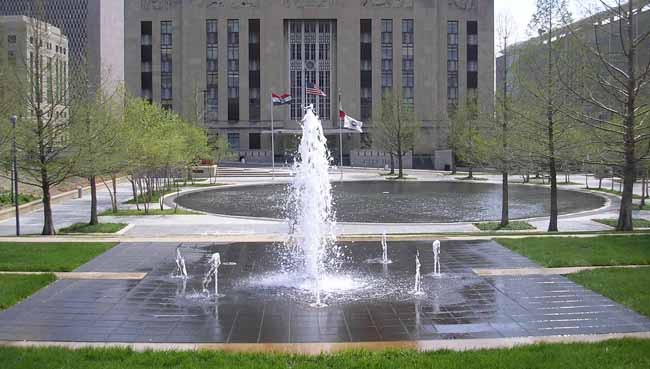
Ilus Winfield Davis Statute
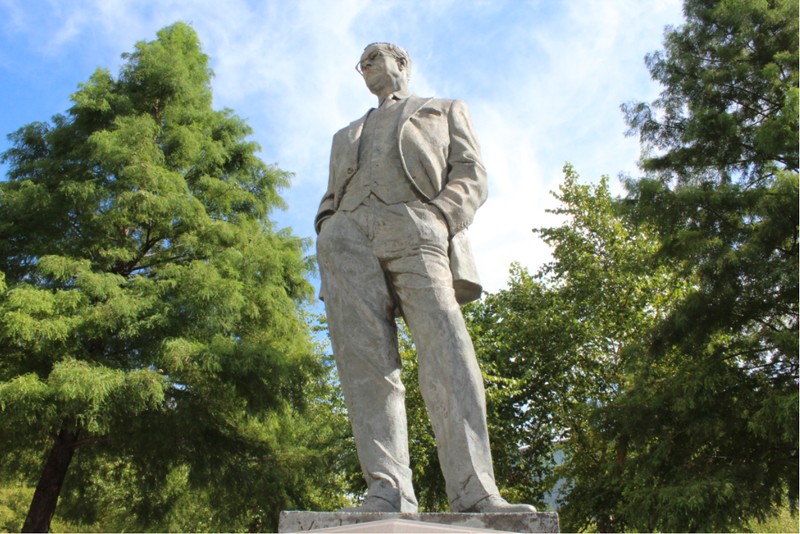
1968 Kansas City Race Riot
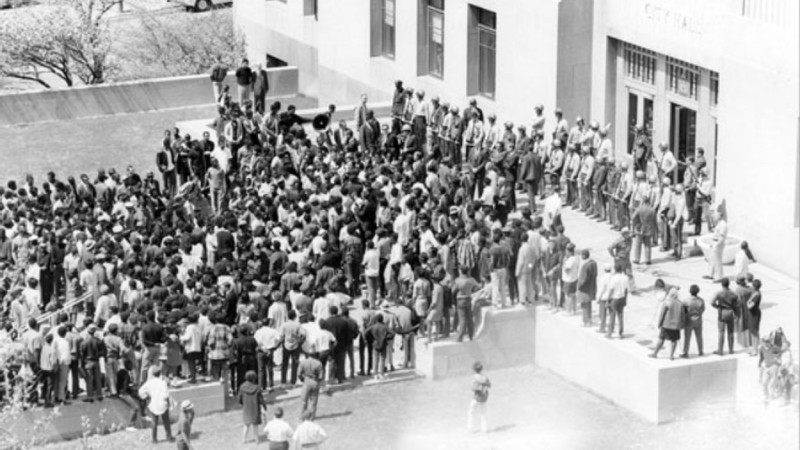
1968 Kansas City Race Riot
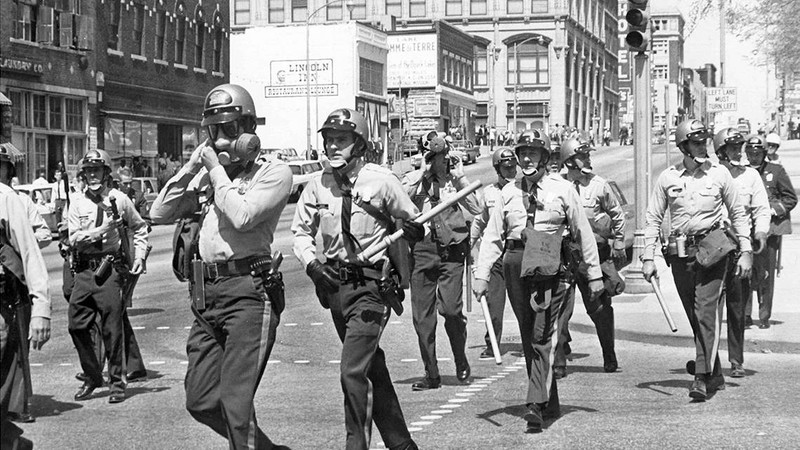
1968 Kansas City Race Riot
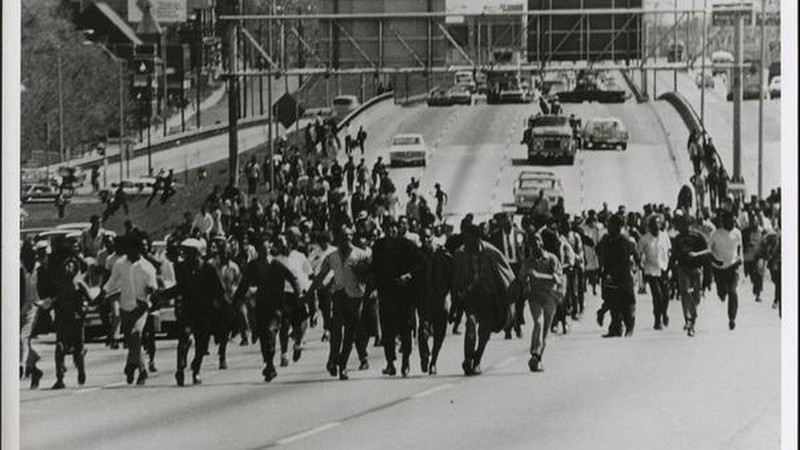
Backstory and Context
Text-to-speech Audio
Ilus Davis was born on April 22, 1917, in Kansas City, Missouri, and went on to attend the University of Kansas City (known today as the University of Missouri-Kansas City). While there, he proved instrumental in founding the student newspaper: The University News. David later obtained a law degree from the University of Missouri in Columbia. In his mid-'20s, he served in the Army during World War II, ultimately fighting in Manilla under General Douglas MacArthur's command.
After the war, he returned to Kansas City and married, and in 1948 ran for city council, serving two terms. In 1963, he won a close mayoral election, besting his opponent by a little more than 1,800 votes out of 110,000 submitted; he served from 1963 - 1971. During his tenure, he oversaw the bond issue to build Kansas City International Airport, and he set in motion the construction of two professional sports stadiums. He also spearheaded numerous community improvement projects. But, Davis likely is remembered mainly for his connection to the city's Civil Rights movement, including the 1968 Kansas City race riot associated with the assassination of Martin Luther King Jr.
Kansas City did not experience any civil unrest similar to other cities in the wake of the Martin Luther King assassination. Following MLK's murder, at least two peaceful marches transpired, attended by thousands of White and Black people. In the four years before the riot, several desegregation transitions took place largely without incident. In 1964, in Davis's first year as mayor, he strongly supported a public accommodations ordinance desegregating restaurants, taverns, and hotels. The measure went to a vote where a significant African American turnout countered the two‐thirds of the whites who voted to oppose the measure. Davis noted his displeasure with the close vote but championed it as a step in the right direction. Davis routinely boasted that despite the city's decades of tenuous race relations, Kansas City enjoyed peaceful desegregation while violence erupted in other cities.
But, the city's choice to keep schools open on the day of King's funeral angered the Black community and led to hundreds of inner city students leaving schools to march toward Kansas City City Hall. Mayor Davis chose to joined the marchers and several leaders from the Black community as they approached City Hall. Together, they encountered a large contingent of police officers, many dressed in riot gear and gas masks, and some joined by dogs. The police intended to keep marchers from approaching downtown, but Mayor Davis instructed the police to let the marchers through. Stories about what happened next differ, but tensions ensued. The police eventually launched tear gas into the crowd, which served as a catalyst that resulted in days of rioting, leading to the dispatching of the National Guard, widespread property damage, hundreds of arrests, numerous injuries, and six dead Black persons, five killed by the police.
After the riots, Davis and the city council quickly reformed its housing ordinances to desegregate housing sales and rentals, something civil rights leaders noted long before the riots that the city was too slow in addressing. Davis also created a city commission on civil disorder. Additionally, Davis moved to assemble the city's Human Relations Department and Human Resources Corporation to bring President Lyndon Johnson's Great Society programs to Kansas City (one of the most extensive social reform plans in modern history).
Although the riot revealed that the racial divide remained, Davis is credited by many for the progress he made in ending many of the city's discriminatory practices. Indeed, former Kansas City NCAAP President, Herman Johnson, spoke at Davis' funeral in 1996 and noted the significance of Davis regarding the Civil Rights movement. The park speaks to his connection to the Civil Rights movement and his success in helping Kansas City grow. In addition to the flowers, trees, fountain, and reflecting pool, a bronze statue of Ilus Winfield Davis was added to the southwest corner of the park in 2004.
Sources
DeAngelo, Dory. "Ilus Davis: 48th Mayor of Kansas City. 1917-1996." Kansas City Public Library. kchistory.org. 1999. https://kchistory.org/islandora/object/kchistory%3A115513/datastream/OBJ/view.
"Kansas City Sifts Rights-Law Vote; Big Negro Turnout Offsets White Opponents' Margin." The New York Times (New York), April 12, 1964.
"Ilus W. Davis Fountain." KC Parks. Accessed July 21, 2022. https://kcparks.org/places/davis-ilus-w-fountain-2/.
"Ilus Winfield Davis." City of Fountains Foundation. Accessed July 21, 2022. https://cityoffountains.org/ilus-winfield-davis/.
"Ilus Davis Park." KC Parks. Accessed July 21, 2022. https://kcparks.org/places/ilus-davis-park/.
Phillips, Kynala. "KC Black History: KCQ reflects on 1968 student-led Civil Rights walkouts that shook the city." The Kansas City Start (Kansas City), March 6, 2022. https://www.kansascity.com/news/your-kcq/article258307148.html#storylink=cpy.
"Reaction or Riot? Kansas City, Fifty Years After The Slaying Of Martin Luther King Jr." NPR.org. April 9, 2018. https://www.kcur.org/show/up-to-date/2018-04-09/reaction-or-riot-kansas-city-fifty-years-after-the-slaying-of-martin-luther-king-jr.
"This Week in KC History: And Then It Happened." Kansas City Public Library. KChistory.org. March 16, 2018. https://kchistory.org/week-kansas-city-history/and-then-it-happened.
Ziegler, Laura. "Fifty Years Later, Kansas Citians Remember The Fury And Fear Following Assassination Of MLK Jr." NPR: KCUR. April 4, 2018. https://www.kcur.org/community/2018-04-04/fifty-years-later-kansas-citians-remember-the-fury-and-fear-following-assassination-of-mlk-jr.
https://kcparks.org/places/davis-ilus-w-fountain-2/
https://cityoffountains.org/ilus-winfield-davis/
National Public Radio (NPR): https://npr.brightspotcdn.com/dims4/default/7407c1d/2147483647/strip/true/crop/750x422+0+38/resize/1200x675!/quality/90/?url=http%3A%2F%2Fnpr-brightspot.s3.amazonaws.com%2Flegacy%2Fsites%2Fkcur%2Ffiles%2F201408%2FKCriot%281%29.PNG
The Kansas City Star: https://www.kansascity.com/latest-news/nrn5jb/picture240699721/alternates/LANDSCAPE_1140/1968%20race%20riot%20kansas%20city.jpg
The Kansas City Star: https://www.kansascity.com/latest-news/bbhwq/picture258295603/alternates/LANDSCAPE_1140/1968%20Riot%207
